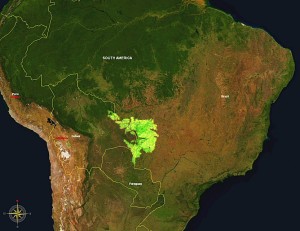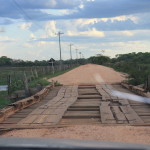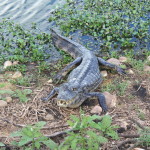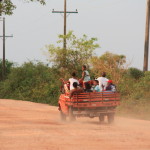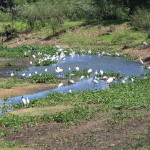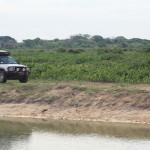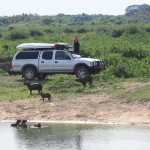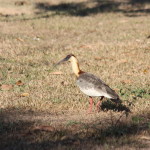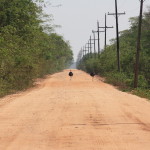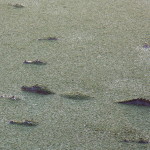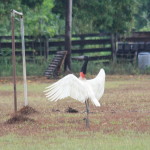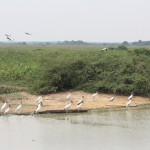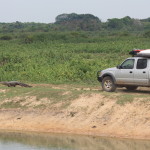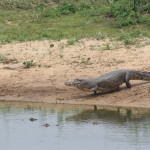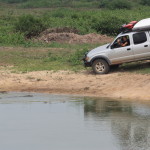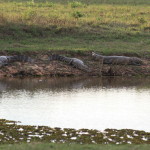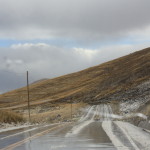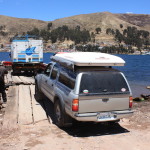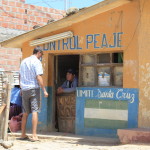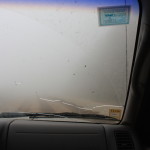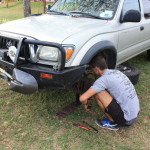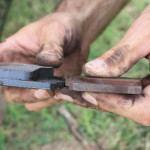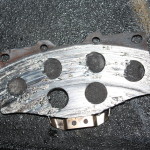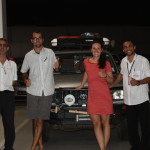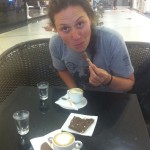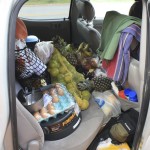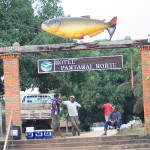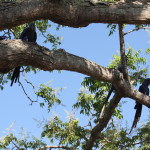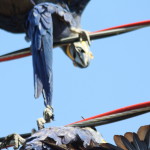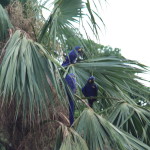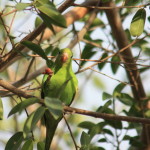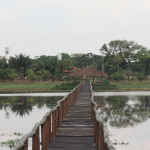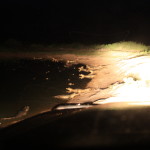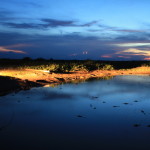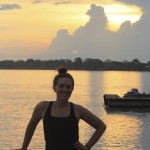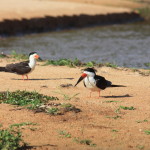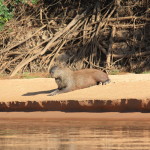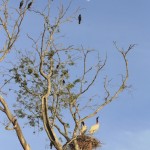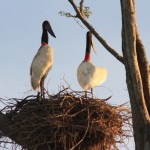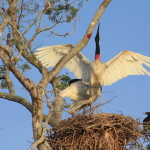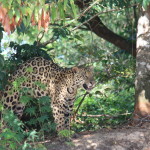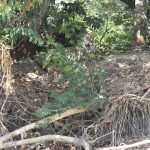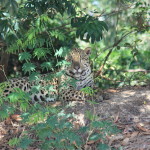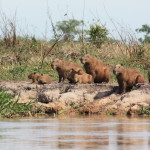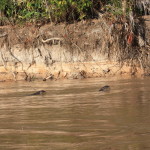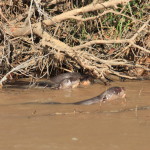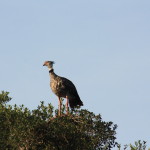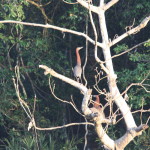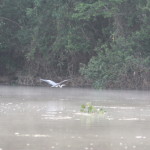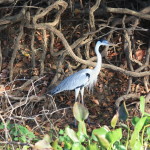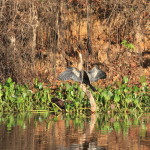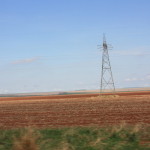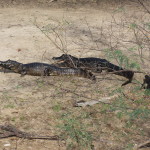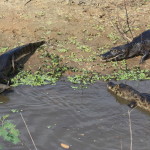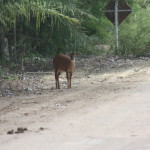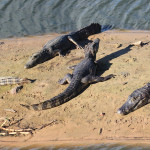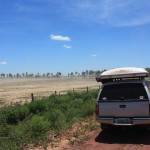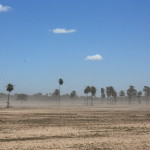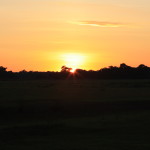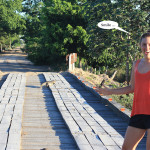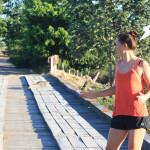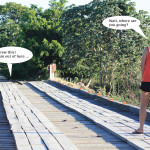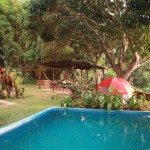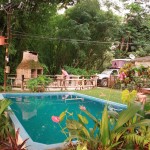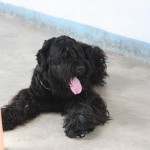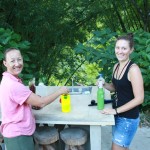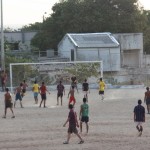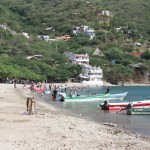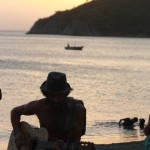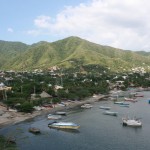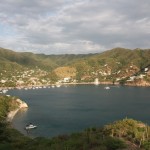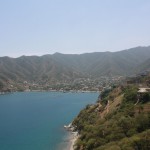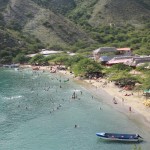One of the best places for wild life viewing on our entire trip was the Pantanal wetlands area. In Portuguese, the word “pantanal” means swamp. Pantanal spans across south west Brazil, Bolivia and Paraguay but the majority of the park is in the Brazilian states of Mato Grosso and Mato Groso do Sul. My ‘small country complex’ requires me to say that Pantanal is about 50% larger than Bulgaria which makes it HUGE!
Wait a minute! You don’t know how large is Bulgaria??
… anyhow! Back to the story.
When we originally planned our trip back in Seattle in 2012 we decided to skip Brazil. Our primary goal was to hug the west coast of South America and follow the Andes. Brazil is so large and diverse that it would require a Brazil-only trip in the future to do the country justice.
Fortunately, things do not always go as planned. On the road, we started meeting long term-travelers who were telling the same story. There was a magical and remote place deep in the Brazilian jungle where you can only go with a sturdy off-road vehicle. The travelers assured us of intimate animal encounters.
At first, we did not make much of these stories. A chance encounter with Sergius and Gaby (Germans with an amazing Unimog traveling the world 4 months at a time) changed our minds. Sergius told us about the Transpantaneira road in norther Pantanal that connects the town of Pocone and the Porto Jofre settlement. The road is a 147km long dirt road that is barely a meter over the marshlands and has 122 wooden bridges. To drive it, you have to sometimes go around the bridges and through the mud since some of those bridges have collapsed or are broken. Furthermore, the road is partially or fully submerged during the rainy season. A few countries later, we met Nathaniel and Anita from Belgium. They showed us amazing photos of three jaguars they saw on a boat ride through the Pantanal marshes. They also showed us some ridiculous camping spots by a river overflowing with caymans.
Oh boy! Really remote, rarely visited park accessible only by 4×4 over bad, broken or missing bridges and unbelievable wild life – we were soooo hooked!
- The very beginning of the road. This is one of the very first bridges we crossed.
- Cayman – not made of wax!
- Picking a bush camping spot at the beginning of the Transpantanaira is tricky. Too close to the road and you are a constant attraction for the ranch workers on the way back home after work. Too far off the road you risk unpleasant animal encounters. Deeper in the park people were not an issue anymore since ranch workers were so far out of town that it did not make sense to drive it twice daily anyone.
- Local ranches take tourists from Cuiaba on a single day safari or overnight two day trip. The ranches offer a tour on parts of the Transpantanaira in an open top 4×4 vehicle and a guide who shows people the animals (and occasional overlanders) from the comfort of their seats way above the ground.
- Some bridges are better than others
- The capybaras were not impressed with me.
- Hell bird wi amazing red eyes!
- Two stupid wild ostriches walking on the road. After waiting for a little I had to keep driving. You would think they will stop and turn into the bush …
- Cayman camouflage
- Goalkeeper
We started prep for Pantanal long before we were anywhere near Brazil. We went to the Brazillian embassy in Bogota, Colombia to get Teresa a visa. Turns out Bulgarians do not need a visa for Brazil but Canadians do. Unfortunately I needed a visa for Bolivia so we combined the wait in Bogota. The process for getting these visas was another adventure in itself, but I will leave this to your imagination. Just think catch 22 Bolivian style sprinkled with Colombian bureaucracy and a fascination for colorful stamps and signatures … Magic!
To put it mildly, we had an ambitions plan. Drive from Cusco, Peru to Pocone, Brazil. This was a 3,500 miles stretch of road one-way that included absolutely every driving condition you can possibly imagine. The path included Puno, Peru, Copacabana, lake Titicaca, La Paz, Cochabamba and Santa Cruz in Bolivia and Corumba, Campo Grande and Cuiaba in Brazil.
Fourteen grueling days later we made it. We had gone through snow and hail storms in Peru, crazy duck-tape ferry in Bolivia. We survived the insane traffic in La Paz and being lost at 1am in Cochabamba – the cocaleiro capital of Bolivia. The car braved 4000 meters mountain passes at well below zero and drove long days in the jungle at 35C and 100% humidity. We pulled through illness – both the car and I had “melted disk rotors”… mine were just the food type. Note to self: the 3 seconds food rule in the Bolivian jungle does not work. We even had the usual immigration and customs set of problems. According to the omnipotent Bolivian customs’ computer system our car had left Bolivia less than 24 hours after entering at a border crossing with Argentina which was 5 days away.
- Hail storm
- City roads in Puno, Peru
- Ferry lake Titikaka, Bolivia
- Loading dock
- Toll on the road between Cochabamba and Santa Cruz, Bolivia
- Foggy maddness
- Eventually after a two day violent food related illness I was able to gather enough strength to try and fix the breaks.
- Difference between an old one and a new one. The only problem is that the old pads had only 3000 miles on them. Hence, you should pay a little more money and avoid the Chinese super cheap products. In our case we had to buy these since they were the only choice at the time.
- This was the inside break pad. It had completely disintegrated and there was metal on metal. The inside of the break disks had melted to within 2mm from breaking through. It was funky!
- Brazil and Bolivia border in Corumba, Mato Groso do Sul. Boy, were we happy we did not have to bargain with gas attendants anymore for buying gas … That sucked!
- The fantastic Toyota dealership in Campo Grande, Brazil! We went there to buy new disks weigh me planning on changing them myself. Not only did they change them for us but the dealership manager drove 55 kilometers to go to their storage facility way out of town and pick the disks specially for us. This was absolutely amazing! We felt like rockstars! The mechanics in the shop were really impressed with our truck. A group of 5 or 6 mechanics spent a ton of time taking videos and photos of the car and at the end they asked us for pictures with us. The guy on the left is the dealership general manager and the guy on the right one of the office people who was assigned to help us. Awesome guys.
- Chocolating away the pain from the long driving days …
The Transpantaneira north was totally worth it. We drove to Pocone, stocked up with two weeks of food and water supplies and headed to drive the famous 147 kilometers.
- Transpantanaira sign starting from Pocone. In my humble opinion the Transpantanaira north is better than the one south starting from Corumba. There is a lot more stuff to see north despite what the local guides will tell you down south. There are very interesting private ranches both north and south (i.e. not unique to either side) where you can go night piraña fishing and cayman watching.
- The back seats were stuffed with all kinds of food. You can actually also see the black round box with the old melted disk rotors from coming down the mountain. I was too sick to change the disk pads and we had to drive on worn out pads. Thank you China for making pads that disintegrate after 3000 miles of driving …
All in all we did 8 nights in the area. The first night was a bush camp on the shores of Rio Cuiaba a little north of Pocone. This was a popular locals’ river beach that was recommended by the www.landcruisingadventure.com folks. We spent the next two nights bush camping on the side of the Transpatanaira road. We picked flat areas off the road and away from any water. The caymans come out of the water at night and stroll around. Next, we did three nights on the property of Hotel Porto Jofre on the bank of Rio Cuiaba (Cuiaba River). We finished with two more nights bush camping on the road followed by a night at a gas station in another small town on the way to Cuiaba.
Hotel Porto Jofre was fantastic. The property manager let us camp there for free. The place looks very fancy on the outside with its private runway and big locked gate but the guys are super friendly. Just ask! They had an amazing outdoor swimming pool and outdoor cold shower. Both were perfect for the hot humid days. At night, the property was packed with blue macaws playing and feasting on tons of fruit trees.
- Hotel Porto Jofre from the water. You can do fishing trips or wild life watching trips. They are both pricy but amazing and highly recommended. To quote the property manager: “we cannot guarantee you will see a jaguar but it is 99% likely you will” … and we did.
- Blue macaws hanging on a tree
- Tail pull
- More blue macaws hanging on a tree
- Sunset at hotel Porto Jofre
We were given a word of caution by the folks at Hotel Porto Jofre. Be careful what you do at night and never walk alone in the dark even on the road. There are tons of animals and their habits change at night. There are millions of caymans, all kinds of snakes, including anacondas (unfortunately we did not see one), insects, spiders big and small bigger, jaguars and all kinds of other seemingly harmless animals that are freaky at night.
- This tarantula was a few feet from our tent hanging.
- No skinny dipping tonight …
- More caymans
- Play frogger on headlights
We hired a boat from the Porto Jofre hotel one morning to go photo hunting for a jaguar. The boat was really expensive but it was worth it. We saw the endangered giant river otter, tons of birds, capybaras (these guys are everywhere) and most importantly, thanks to Teresa’s hawk eyes, the mighty jaguar.
- Teresa smiling at 5am? I was not …
- Early morning fog on the water
- Cool looking birds
- Capybaras
- Giant stork nest
- Jabiru storks
- Jabiru: these big fellas are up to 1.4m high.
- The Jabiru wing span can get up to 2.8m across.
- 120kg male jaguar
- He does not seem impressed with the Canadian and Bulgarian breakfast sitting across the stream in a boat.
- Meow!
- Capybaras: jaguar dinner
- Giant river otter
- A full family of giant river otters
Did you know jaguars are fantastic swimmers and can also dive? It was eery seeing the guy a few meters away from us chilling on the river banks. As a friend commented after seeing the pictures later “seems you are not that interesting to a jaguar” … and thank God! See the picture to the left from Wikipedia.
Not all bridges on the Transpantanaira were made equal. After the 50th bridge the early excitement wore off and Teresa started snoozing even at the worst spots.
As we were leaving the Transpantanaira north, we came across two wild ostriches walking on the road. After we waited for a bit for them to leave the road, I decided to start driving. You would think they would simply get off the main road right …
After the Tranpantanaira north road we headed to the south part of the park. Technically we first went to Iguasu and to Bonito, but eventually we drove the so called transpantainaira south. The south road has fewer bridges but you have to hop on a little ferry to cross the Rio Paraguai which compensates for the excitement. There are also some hills and some desert like areas which were there thanks to failed farming attempts. We saw a lot of caymans again but generally less animals than we saw out north. I suspect the animals were the same both places but they were somehow much more accessible out north. The south road stars 20 miles outside of Corumba and heads straight east before it cuts straight south. The second part of the road is the more interesting one with more watering holes full of caymans and fish. It was also late in the dry season (just a few weeks before the beginning of the rain) and there was very little water left forcing all animals to fight for food and space in the water. It was a bit hard to watch.
- This is how the road looks around Pantanal. If it was not for the fact that 80% of the area gets submerged in the rainy season Pantanal would have been long turned into farming lands. It is really said to see…
- Caymans fighting for a fish. These guys were living in a super small water hole. The end of the dry season had forced a ton of caymans, fish and birds in the same spot.
- Catch me if you can …
- Marsh dear
- Failed attempt at farming the land here has resulted in turning the soil in a desert field. Really hard to watch humans making a mess in this amazing environment!
- More failed farming. What a waste!
- Sunset in south Pantanal
It was Teresa’s job to walk ahead, clear bridges, check them and guid the driver (me) safely along the bridge. So here we got to the following situation …
So what is the verdict? Were the extra driving days worth it? Absolutely! Getting to Pantanal by itself was an adventure. On the way there and back we visited Bonito and the Iguazu waterfalls so we ended up spending about a month in Brazil. Brazil is easy to travel with good roads, nice drivers and a really good network of gas station most of which have free hot showers, free internet and buffets. There are lots of big trucks in the Pantanal area but they will actually make way for you and not bother you. Just watch for those speeding cameras everywhere. We spent cumulative about 12 days in Pantanal and every single day we were surrounded by wild life. Overall it is a fantastic adventure travel destination. If you have a car and you get a chance to visit do it! Seeing wild life in the dry season is incredibly easy. We were there middle of October, 2013. If it has not rained you do not need a 4×4 but if it rains hard you probably stand no chance without one.
Another piece of advice is if you want to see Jaguars hire a boat. The guides at the Porto Jofre hotel were talking to each other on the radios and when one sees a jaguar he calls all other boats. This increases you chances a lot.
Enjoy your travels there and send us some pictures. Pantanal is magical and wild!

